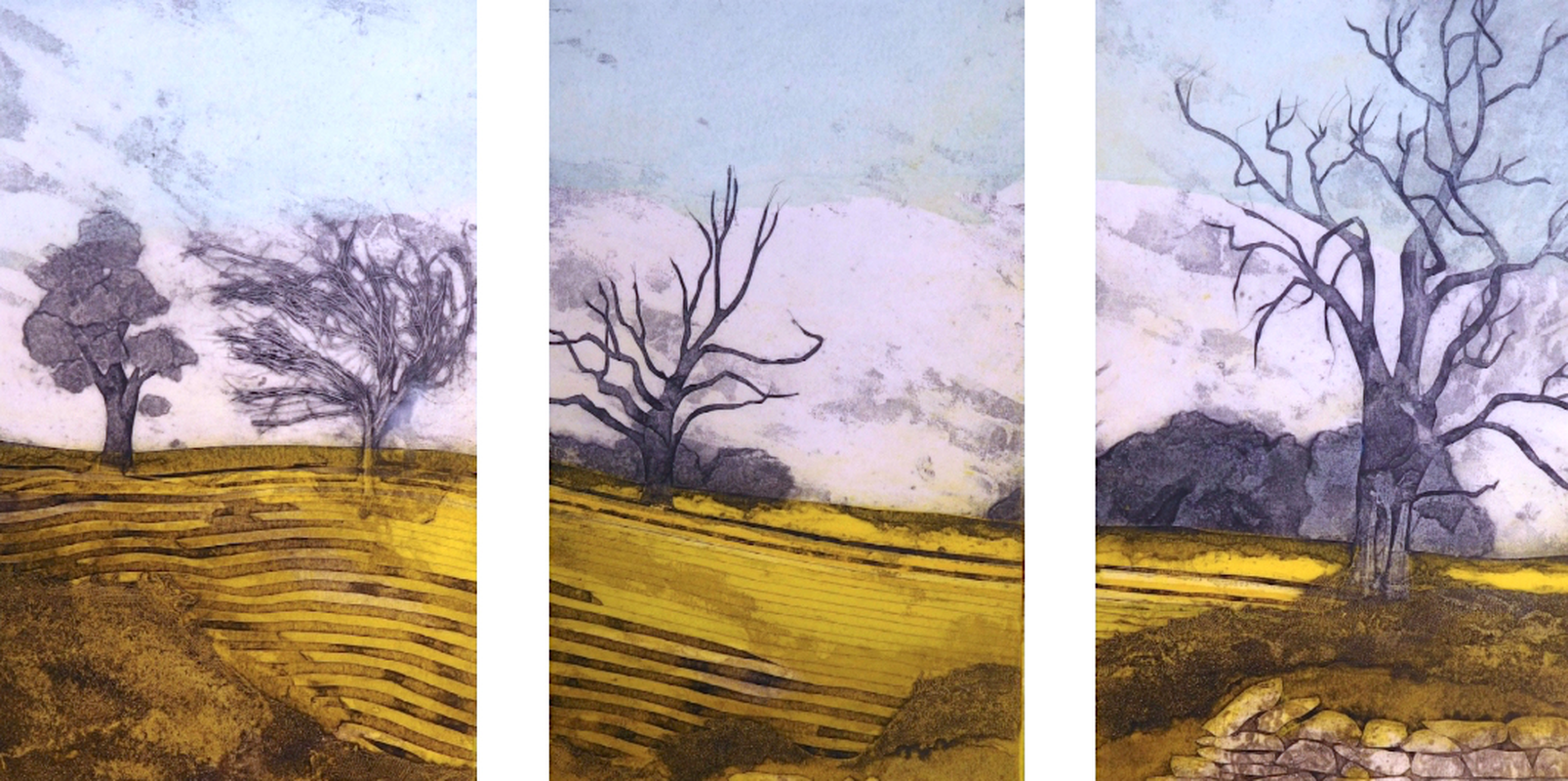
SARAH ROSS-THOMPSON AND THE ART OF COLLAGRAPHED PRINTS
I interviewed artist Sarah Ross-Thompson whose exceptional Collagraphed prints use fabrics, lichen, porridge and string to create images of the dramatic Scottish Highlands where she
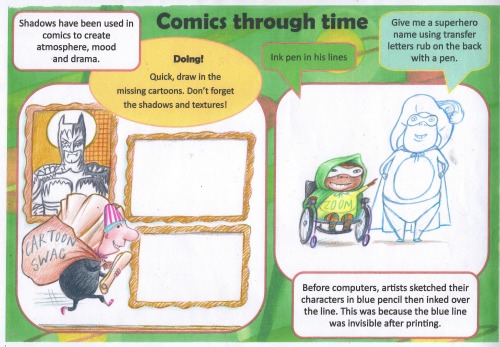
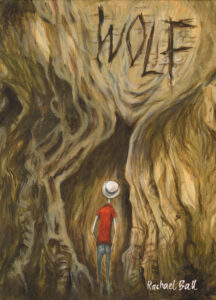
In part two of my interview with prize-winning graphic novelist Rachael Ball, she talks about effective dialogue, her experiences teaching art, her creative highs and lows, and the technical and imaginative work that goes into her art.
Reviewing Rachael’s The Inflatable Woman, Pipedream Comics called it, ‘A Timeless classic that people will read for many years to come.’
Leslie: How do you put together effective dialogue?
Rachael: Think about how your character is feeling at the beginning of the scene, how they feel about the other characters. What they want. Then write it quickly with no editing. Then go back and read and reread lots- let it flow, cut repetitions, read and reread again. Listen for the music and the tempo of the dialogue, the rhythm. Find the best words. What doesn’t need to be there? Cut it and hone it down until the script glows.
Leslie: What did you learn from teaching art for 2 years at St Andrew’s secondary school?
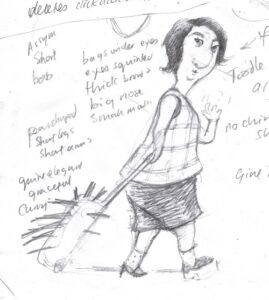
Rachael: Teaching art in general is a really good discipline for improving and honing your skills as an artist. At my first school I didn’t do any of my own art work at all for 5 years. There just wasn’t time, my daughter was little and I was teaching full time. When I started painting again I presumed my work would be stiff and weak but instead I found it to be more confident and a lot more skilful. Paintings just flowed out. I realised I’d been developing skills by demonstrating to pupils and my being emersed in other artists’ work. I’m not sure teaching at my secondary school particularly influenced my work in any unique way other than how it inspired The Patsy Papers (see below.) My experience teaching GCSE exam projects certainly inspired how I teach graphic novel workshops. Always aiming to balance fun and depth; how to gradually introduce difficult concepts so students aren’t overwhelmed; how to get students into creating fast so they don’t freeze up from fear and other things.
Leslie: How did you use that knowledge with Paula Young in your commission for the Cartoon Museum?
Rachael: We were commissioned to come up with fun resources for small kids for the museum. Resourses that that would be engaging for small kids at the museum, easy for the parent to lead and low maintenance for the museum to maintain.
Paula and I are used to working together as we’d job shared for a year at St Andrews and taught together for another 2 years. We find it easy to tell each other when we’re happy or unhappy with each other’s ideas. It was fun bouncing ideas off her within the brief. She has more knowledge of what’s appropriate for very young children and what excites them so we used that knowledge to guide the ideas.

Leslie: How are The Patsy Papers related to your teaching experience?
Rachael: The graphic novel is related to my experience of working in a school that started to fall apart.
The last school I worked at I was bowled over by the behaviour of the kids. It was generally exemplary for a little state school. So many of the kids were invested in the school and proud to be there. The staff and Heads of Year worked hard to engage the difficult kids too. There were very high standards intellectually, ethically and this was connected to the spirituality of the school as well. Over a very short period, this was destroyed by a few external pressures. The school having to compete with larger comprehensives, grammar and a private school. The school population was falling and it was losing the brighter kids to the other schools. The school got a ‘Requires Improvement’ judgement from Ofsted for being wobbly on assessment and that was the nail in the coffin. Parents started to stay away. The old Head retired and a new inexperienced and rather arrogant Head came in making sweeping changes and destroying the ethos of the school. Within a year the behaviour of the kids went from really good to appalling. It became quite a scary place to work and probably extremely unpleasant or the kids too.
The Patsy Papers tells the story of the impact one Head can have on a school but wider than that it’s also looks at who is the current education system serving? Probably only 1/3 of kids really, really enjoy school as it’s so focused on academia. A lot of kids leave school feeling like a failure and then spend years building up their self-esteem outside of school.
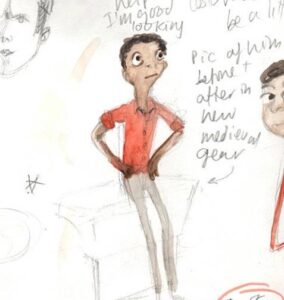
It also looks at the necessity of teachers having to learn how to inspire and control large groups. It’s a tough and learning experience for a new teacher.. How can you be authoritarian and feel comfortable with yourself? It feels like an uncomfortable fit at the start then quickly becomes a skill that every teacher craves. Developing authority is a difficult and tentative process. I used to feel that the authority of being a teacher was very visceral and connected to the authority and discipline of the whole school. Each teacher is like an organ of the whole school body and all parts need to be well or at least most of them for the school to function.
It’s also about hierarchy within a school and the dog eat dog set up which is created by a school set up where teachers are expected to do too much in too little time. Expected to achieve an impossible task.
Leslie: How do you experience your moments of greatest and least creativity?
Rachael: There are various stages – being open to all and any ideas. They might hit like thunderbolts or float to the surface like an old shoe. The structural phase- what do my characters want, think? What’s the theme of this story, the shape of it? That always feels like the hardest work. But once it’s in place the flow of writing is the real joy. When you want to punch the air and laugh out loud because you’re so excited by something that you’ve just thought of. That’s pure joy, I love that. Also, character creating is loads of fun. I love that getting to know you phase.
Leslie: What part do different instruments and materials play in creating your best work?
Rachael: I’m thinking about those tools quite a bit at the moment. My past 2 books were all 2B pencil and paper which I love. The Patsy Papers I plan to do it in water colour with some digital process thrown in. Partly because it’s about time I get digital but also because I don’t want the next book to take another 2 or 3 years. I need to get faster and more efficient. I have a strong urge to get more stories out as I get older before time runs out!
Leslie: There’s a very deep subtext to your work. Something about the power of imagery & metaphor to bring us close to the subjective dream-self and mythological living. Would you like to comment?
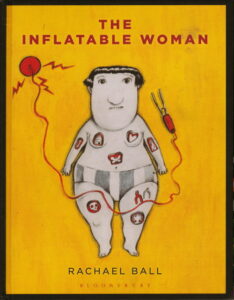 Rachael: I like the way you put that. The usefulness of visual metaphors is often something that comes up in the graphic novel workshops I teach. That use of the visual metaphor is the unique string that graphic novels hold over other mediums. Sometimes when we struggle with plot creations I’ll get the students to think about what weather or a type of music or what form of dance the act or scene could be. Visualising it in a more organic and visceral way brings you right into the heart of your story. Into the heart of the meaning. A meaning beyond words and explanation. We all understand the sum total of our or others experience when we describe our experience as a metaphor. In The Inflatable Woman there’s a scene where Iris is having countless injections. It was a lot more emotionally effective to show her being pecked at constantly by a long beaked bird rather than show a syringe. That image conveys inner feeling that the syringe can’t show. It also accesses a dream like world we all understand, a language of a collective unconscious.
Rachael: I like the way you put that. The usefulness of visual metaphors is often something that comes up in the graphic novel workshops I teach. That use of the visual metaphor is the unique string that graphic novels hold over other mediums. Sometimes when we struggle with plot creations I’ll get the students to think about what weather or a type of music or what form of dance the act or scene could be. Visualising it in a more organic and visceral way brings you right into the heart of your story. Into the heart of the meaning. A meaning beyond words and explanation. We all understand the sum total of our or others experience when we describe our experience as a metaphor. In The Inflatable Woman there’s a scene where Iris is having countless injections. It was a lot more emotionally effective to show her being pecked at constantly by a long beaked bird rather than show a syringe. That image conveys inner feeling that the syringe can’t show. It also accesses a dream like world we all understand, a language of a collective unconscious.
Next week I interview actor & theatre director Scott Kyle, best known for his roles as Ross in Outlander, Clancy in The Angels’ Share, and Corporal Stu Pearson in the film Kilo Two Bravo.
ABOUT LESLIE TATE’S BOOKS:

I interviewed artist Sarah Ross-Thompson whose exceptional Collagraphed prints use fabrics, lichen, porridge and string to create images of the dramatic Scottish Highlands where she
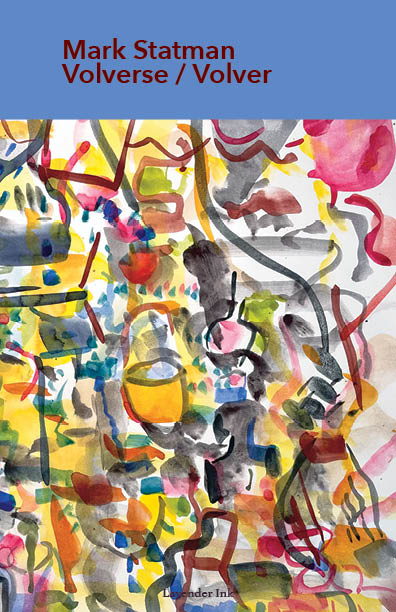
Part 2 of my interview with Mark Statman looks closely at Mark’s Latin American poetic influences, his life in Mexico and ends with an extract
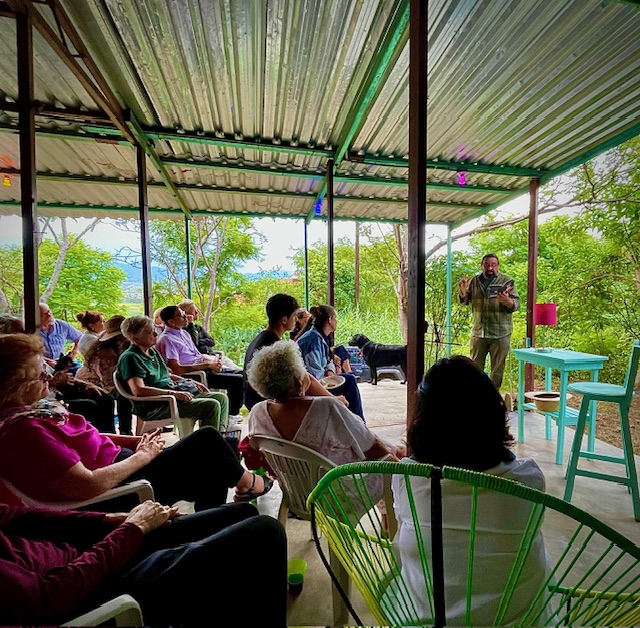
I interviewed international poet and translator Mark Statman about Volverse/Volver, his 14th published collection. Mark, who has won national arts awards, is Emeritus Professor of Literary

I interviewed Lisa Dart, finalist in the Grolier, Aesthetica and Troubadour Poetry Prizes and author of The Linguistics of Light (poems, Salt, 2008), Fathom (prose
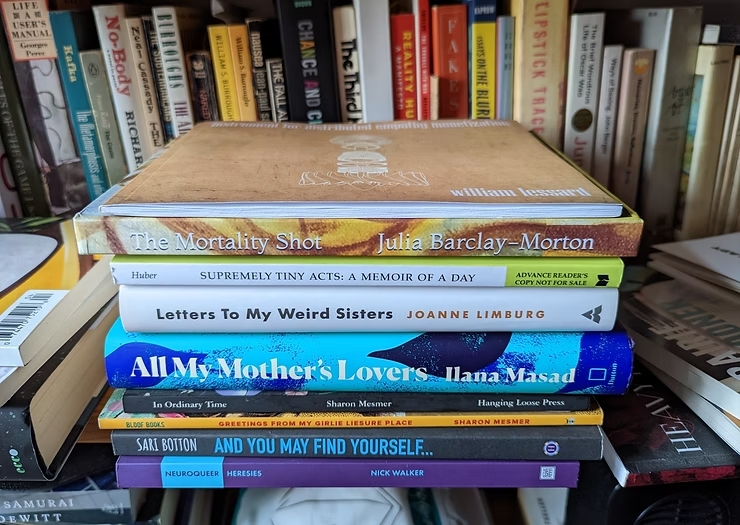
I interviewed writer Julia Lee Barclay-Morton about her experience of autism. Julia began as an experimental dramatist in New York, moving to the UK to
| Cookie | Duration | Description |
|---|---|---|
| cookielawinfo-checkbox-analytics | 11 months | This cookie is set by GDPR Cookie Consent plugin. The cookie is used to store the user consent for the cookies in the category "Analytics". |
| cookielawinfo-checkbox-functional | 11 months | The cookie is set by GDPR cookie consent to record the user consent for the cookies in the category "Functional". |
| cookielawinfo-checkbox-necessary | 11 months | This cookie is set by GDPR Cookie Consent plugin. The cookies is used to store the user consent for the cookies in the category "Necessary". |
| cookielawinfo-checkbox-others | 11 months | This cookie is set by GDPR Cookie Consent plugin. The cookie is used to store the user consent for the cookies in the category "Other. |
| cookielawinfo-checkbox-performance | 11 months | This cookie is set by GDPR Cookie Consent plugin. The cookie is used to store the user consent for the cookies in the category "Performance". |
| viewed_cookie_policy | 11 months | The cookie is set by the GDPR Cookie Consent plugin and is used to store whether or not user has consented to the use of cookies. It does not store any personal data. |